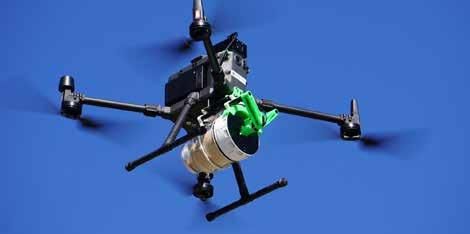
1 minute read
EIMA 2022 turns the spotlight on agricultural drones
Aerial drones, mainly used for data collection, are seeing an increase in their use for certain important agricultural operations, such as pesticide treatments. The use of these machines proves particularly effective for spot operations and for interventions in settings that are difficult to access by other mechanical means.
The use of drones in agriculture is now an established practice. Mainly used for the collection of data that are then processed, analysed and combined to perform tasks typical of precision agriculture, aerial drones are now also increasingly being used to perform certain important crop operations. These include pesticide treatments, organic and integrated pest control, and pollination interventions.
Advertisement
This was the theme of the meeting entitled ‘Present and future of vineyard treatments by aerial drone’, which took place on the fourth day of EIMA International as part of the initiatives promoted by EIMA Campus. Aerial drones - it was said during the seminar - can be used both on herbaceous crops and arboreal crops (vineyards). In both cases, the use of this particular type of technology has many strengths, although variables relating to the orography of the land, offtarget losses and possible difficulties in planning flight routes must be taken into account.
However, drones offer the great advantage of performing ‘spot’ treatments, i.e. on the individual plant, and of working successfully even in complex environmental settings (such as terracing and steep slopes) that make it almost impossible to use traditional machines such as tractors and sprayers. In addition, the use of drones for pesticide treatments has important safety implications, as it prevents the operator from being close to the chemicals contained in pesticides.

Agricultural drones were also discussed today at the conference entitled ‘The evolution of the use of drones in agriculture for aerial spraying: the Marche project’. During this meeting, the speakers not only presented the specific experience gained in the Marche region, but also stressed the need for regulatory interventions to clearly and precisely regulate what is to all intents and purposes an emerging field of activity.










